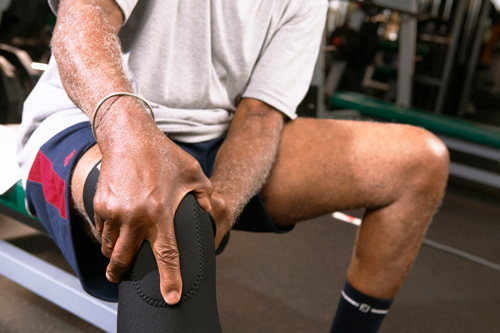
Here’s the catch-22 of physical therapy: Reducing pain requires physical work, but physical work can cause pain that makes it extremely difficult to do that work. Patients with arthritis of the knee joint often find that using a brace allows them to perform strengthening exercises more easily. But some people wrongly believe that a brace can “cure” arthritis or alleviate the symptoms entirely.
Two kinds of knee braces are used to help patients with arthritis. A “sleeve” brace, made of an elastic, rubbery material called neoprene, is worn snugly over the knee to provide support and compression. Shifting pressure from the inside of the knee to the outside, the custom-fit “unloader” (also called an “off-loader”) brace uses a rigid construction (usually made from foam and plastic) that limits movement and increases stability. Both types of braces have proved effective in studies to varying degrees. Sleeve braces are cheaper, more comfortable and easier to use. While they can provide relief from symptoms and may even help prevent further injury by properly supporting the affected knee, they do not improve function. In other words, you feel better while you are wearing the sleeve brace, but it ceases to be effective the minute you take it off, hence, the reason we often have you wear the brace during exercise—to enhance the effectiveness of your strengthening. Unloader braces have fared better in most studies. These braces actually alter the way muscles contract, effectively relieving pain and improving knee function and endurance. They are quite expensive and can be uncomfortable to wear, however, and many patients find them too restrictive for long-term use. Long story short? Think of knee braces as a tool in your therapy arsenal. The best nonsurgical chance you have to regain healthy knee function is through exercises that strengthen your hips and knees—and the best way to do that is through physical therapy. We can advise you on the best use of a knee brace as part of a total exercise program designed to alleviate your arthritis symptoms.
